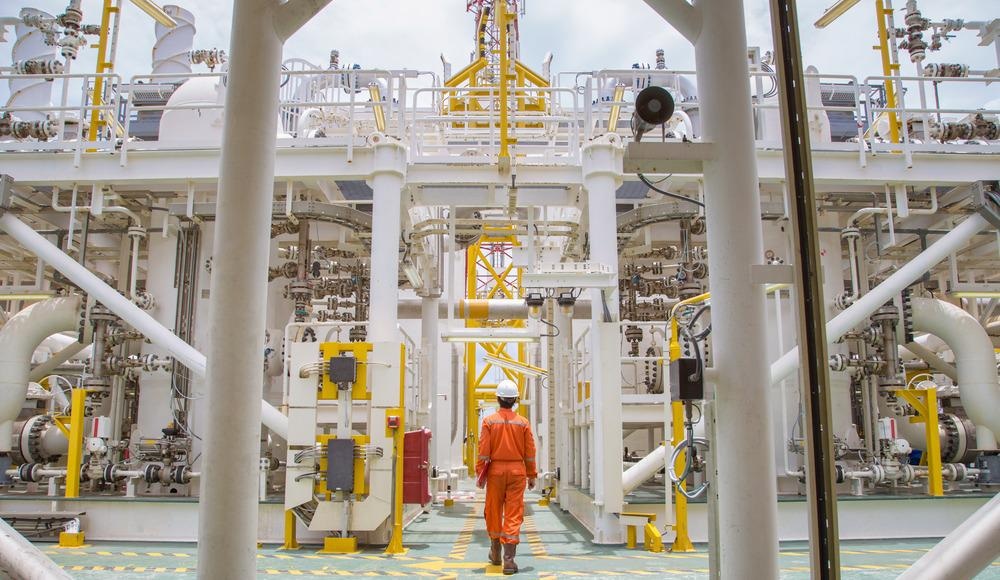An Australian technology start-up, MOVUS, is working to bring the benefits of massive passive data-gathering to bear in industry. MOVUS’s FitMachine condition monitoring sensor has been touted as the FitBit of industrial machinery.

Image Credit: Oil and Gas Photographer/Shutterstock.com
MOVUS aims to transform the machine technology sector by introducing its all-in-one, self-installed condition monitoring solution for smarter and more efficient equipment.
Machine technology has been slow to adopt new processes and ways of working, so MOVUS’s efforts to digitize the sector are predicted to have a high impact on early adopters.
The company’s FitMachine device – and the associated digital platform – can help any industrial firm working with machine technology. The condition monitoring sensor is simple, smart, and results in optimal machine efficiency and lifetimes.
MOVUS
MOVUS was founded in January 2015 by Brad Parsons, who currently serves as CEO. It was established by the University of Queensland’s iLab technology start-up accelerator.
The University of Queensland remains a shareholder in MOVUS, and the company is also still working in the iLab in Brisbane. The FitMachine self-installed condition monitoring sensor is MOVUS’s flagship product.
FitMachine
Industrial machines can lose around 15% of their optimal efficiency just through poor operations and maintenance. This loss in efficiency is detrimental to industrial businesses’ profits and reputation.
Sometimes, however, regular maintenance checks result in no problems being found at all. This itself presents a potentially avoidable cost in terms of both time and capital expenditure.
MOVUS’s FitMachine product is advertised as a simple, low-cost, data-driven means to avoid some of these while maintaining an optimally running fleet of industrial machinery.
The condition monitoring sensor device attaches to any piece of machine equipment magnetically. It then quickly establishes baseline measurements for the machine’s regular running.
Data is recorded and displayed through a dashboard app. If the sensor device records a significant deviation from baseline measurements, it alerts engineers who can carry out further checks.
FitMachine is simple-to-use, self-installed condition monitoring that can be applied to all scales of industrial activity. Installation takes only five minutes and users can attach the magnetic condition monitoring sensor to any desired piece of machinery.
The company charges only a monthly fee per FitMachine device in clients’ accounts. This maintenance-as-a-service subscription business model is a departure from traditional ways of providing warranty and maintenance services and could disrupt the industry.
Clients get an app for any device with a monthly fee, integration support from existing condition monitoring and asset management software, and unlimited updates to improve the dashboard.
FitMachine Sensors
The self-installed condition monitoring sensor includes vibration, noise and temperature sensors. These constantly monitor ambient conditions, passively collecting large amounts of data.
These three metrics – movement, noise and temperature – replicate the live work performed by maintenance and quality engineers. People in these professions resort to their basic senses first when identifying and diagnosing problems with a machine.
The sensor transmits data to a cloud platform provided by MOVUS via WiFi or Bluetooth transmitters that are built-in. A gateway unit collects and aggregates data from several different devices for large installations before uploading it to the cloud.
MOVUS FitMachine; How it Works
Video Credit: MOVUS HQ/YouTube.com
Machine Learning and AI
When the FitMachine is first installed on a piece of machinery, it starts by spending 10 days taking a baseline measurement. This records the usual operating data from noise, vibration and temperature sensors.
A machine learning algorithm works with this data to establish optimum metrics in these areas.
On the MOVUS platform, data is constantly algorithmically examined. This way, clients can be alerted as soon as a piece of machinery starts to behave abnormally.
The machine learning algorithm works with the cloud platform and is powered by Amazon Web Services.
IIoT: Early Adopters
MOVUS’s business is capitalizing on the early adoption of Industrial Internet-of-Things (IIoT) technologies. As more companies realize, the tangible benefits of digitizing aspects of an industrial process are becoming increasingly rewarding.
By providing the cloud platform and analytics dashboard as well the FitMachine condition monitoring sensor devices, MOVUS is seeking to serve both network and infrastructure needs for its customers.
The company is keen to transform industrial machine maintenance immediately. MOVUS software is designed to integrate with any existing asset management software, and the company is committed to supporting all future updates for their client’s existing software.
The current benefits to an IIoT approach are already being enjoyed by early adopters such as MOVUS and the company’s clients. Large datasets and machine learning algorithms support companies to save resources in their maintenance schedules.
This information can minimize the need for people to go to any sites and avoid hazardous areas and procedures, particularly since the outbreak of coronavirus (COVID-19),
As more industries adopt data-driven transformations with the IIoT, more benefits will materialize. MOVUS is well-placed to be at the forefront of this latest industrial revolution.
References and Further Reading
MOVUS [Online] Available at: https://www.movus.com.au/
Boyes, Hugh, Bil Hallaq, Joe Cunningham and Tim Watson (2018). The Industrial Internet of Things (IIoT): An Analysis Framework. Computers in Industry. [Online] https://doi.org/10.1016/j.compind.2018.04.015.
Disclaimer: The views expressed here are those of the author expressed in their private capacity and do not necessarily represent the views of AZoM.com Limited T/A AZoNetwork the owner and operator of this website. This disclaimer forms part of the Terms and conditions of use of this website.